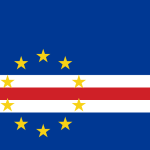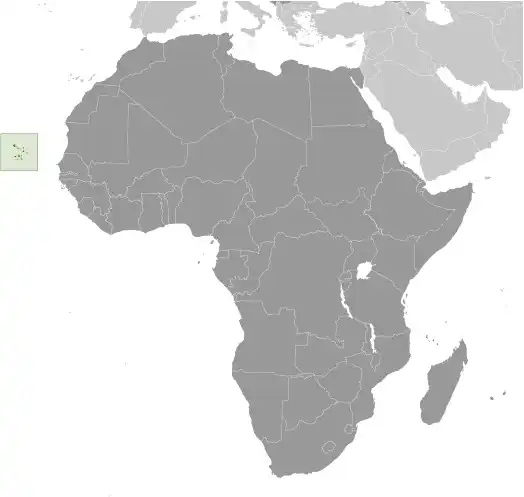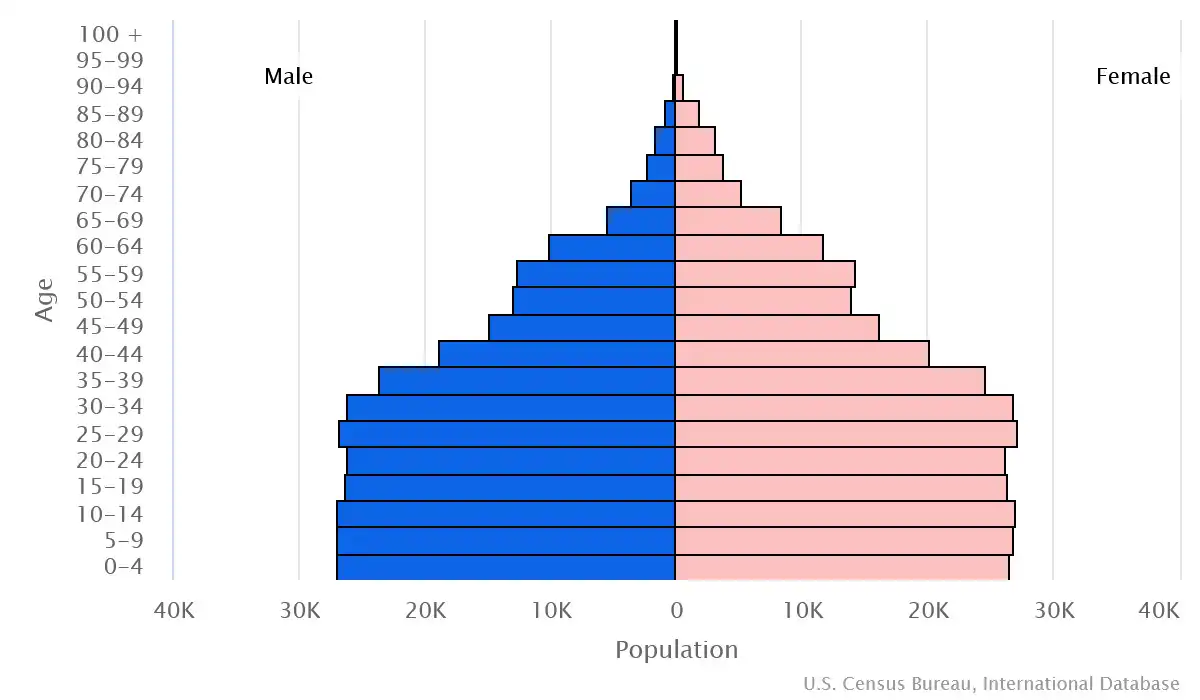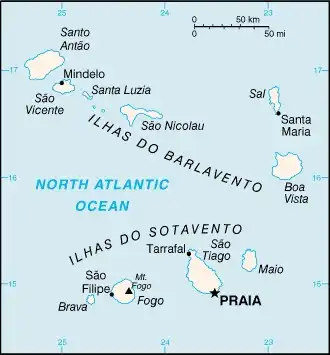
Cabo Verde
Veröffentlicht: 18. June 2022 - Letztes Update: 28. February 2025
Country Data Dashboard

Population
611,014
Growth: 1.16% (2024 est.)
GDP
$2.534 billion
(2023 est.)
Area
4,033 sq km
| Government type: | parliamentary republic |
| Capital: | Praia |
| Languages: | Portuguese (official), Crioulo (a Portuguese-based creole language with two main dialects) |
People & Society
Ethnicity (Mulatto)
Religion (2021 est.)
Age structure

Economy
Economic overview
stable, middle-income, developing island economy; strong GDP growth led by tourism sector recovery; sustained poverty reduction through PEDS II development plan; high reliance on foreign remittances and aid to finance external debt
Real GDP (purchasing power parity) in Billion $
Real GDP per capita in $
Exports & Imports in million $
Top 5 Import Partner in 2022 (73%)
Top 5 Import Commodities in 2022
- refined petroleum ⛽
- fish 🐟
- plastic products ♻️
- milk 🥛
- cars 🚗
Top 5 Export Partner in 2022 (73%)
Top 5 Export Commodities in 2022
- fish 🐟
- shellfish 🐟
- garments 👕
- natural gas 💨
- scrap iron 🛠️
Geography
Map

Area
Natural resources
- salt 🧂
- basalt rock 🧂
- limestone 🪨
- kaolin 🪨
- fish 🐟
- clay 🧱
- gypsum ⚪🪨
Climate
temperate; warm, dry summer; precipitation meager and erratic
Historical Background Information
The Portuguese discovered and colonized the uninhabited islands of Cabo Verde in the 15th century; Cabo Verde subsequently became a trading center for African slaves and later an important coaling and resupply stop for whaling and transatlantic shipping. The fusing of European and various African cultural traditions is reflected in Cabo Verde’s Crioulo language, music, and pano textiles. After gaining independence in 1975, a one-party system was established and maintained until multi-party elections were held in 1990. Cabo Verde continues to sustain one of Africa's most stable democratic governments and relatively stable economies, maintaining a currency pegged first to the Portuguese escudo and then to the euro since 1998. Repeated droughts during the second half of the 20th century caused significant hardship and prompted heavy emigration. As a result, Cabo Verde's expatriate population -- concentrated in Boston, Massachusetts and Western Europe -- is greater than its domestic one.
Most Cabo Verdeans have both African and Portuguese antecedents. Cabo Verde’s population descends from its first permanent inhabitants in the late 15th-century -- a preponderance of West African slaves, a small share of Portuguese colonists, and even fewer Italians and Spaniards. Among the nine inhabited islands, population distribution is varied. The islands in the east are very dry and are home to the country's growing tourism industry. The more western islands receive more precipitation and support larger populations, but agriculture and livestock grazing have damaged their soil fertility and vegetation. For centuries, the country’s overall population size has fluctuated significantly, as recurring periods of famine and epidemics have caused high death tolls and emigration.
Most Cabo Verdeans have both African and Portuguese antecedents. Cabo Verde’s population descends from its first permanent inhabitants in the late 15th-century -- a preponderance of West African slaves, a small share of Portuguese colonists, and even fewer Italians and Spaniards. Among the nine inhabited islands, population distribution is varied. The islands in the east are very dry and are home to the country's growing tourism industry. The more western islands receive more precipitation and support larger populations, but agriculture and livestock grazing have damaged their soil fertility and vegetation. For centuries, the country’s overall population size has fluctuated significantly, as recurring periods of famine and epidemics have caused high death tolls and emigration.
